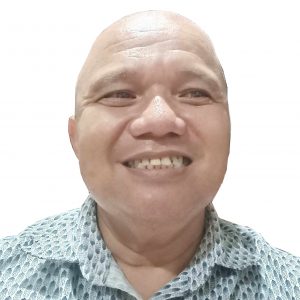
Fighting the guerrillas – apart from the Japanese regular forces – were a Japanese-formed Bureau of Constabulary (later taking the name of the old Philippine Constabulary during the Second Republic), the Kempeitai (the Japanese military police), and the Makapili (Filipinos fighting for the Japanese). Postwar studies estimate that around 260,000 people were organized under guerrilla groups and that members of anti-Japanese underground organizations were more numerous. Such was their effectiveness that by the end of World War II, Japan controlled only twelve of the forty-eight provinces.
The guerilla movement under Ruperto Cadava Kangleon, its acknowledged leader in Leyte had been winning against the Japanese imperial forces. Historical records bare that Ruperto Cadava Kangleon is a native of Macrohon, Southern Leyte is a politician and military officer. He served as Secretary of National Defense from 1946 to 1950 and as Senator from 193 to 1958 as a member of the Liberal Party. He died shortly thereafter in the same year 1958. It is well to mention that the regional headquarters of the Philippine National Police is named after him in recognition of his role and distinguished service for the country and the Filipino people.
It is unfortunate that the small victories won by the guerilla movement which could have been close to defeating the Japanese forces was over-glossed by the return of the allied forces composed of United Kingdom, Soviet Union, China and the United States of America.
It was the allied forces that defeated the Axis Power composed of Germany, Italy and Japan. The Allies used their air and sea power to destroy the Axis’ in a multi-layered battle. This was the true battlefield of WWII: a massive air-sea super battlefield that stretched for thousands of miles. Victory in this super-battlefield led to victory in the war. The Battle of Leyte Gulf earned the label as the largest naval battle in modern history, fought 23-26 October 1944 in the Philippines, this battle virtually ended the Japanese Navy’s capacity to fight as an organized force.
It is well to mention that the research by Atty. Vince M. Tañada led him to the document showing that the return of American General Douglas Mac Arthur was paid by the Philippine government under President Manuel Luis Quezon. Historical records bare that two days later, after discussing it with MacArthur and his cabinet, Quezon issued Executive Order # 1 of the Philippine Commonwealth, awarding MacArthur $500,000, with lesser amounts going to members of his staff.
It is high time for Filipinos to know that the role of General Douglas Mac Arthur in the history of our country was one that grabbed the credit of the victories from our guerillas who fought with gallantry despite inferior arms. Indeed, what was publicly declared as fulfillment of the promise “i shall return” was not fully a heroic act but one which is a return with benefits.
comments to alellema@yahoo.com



